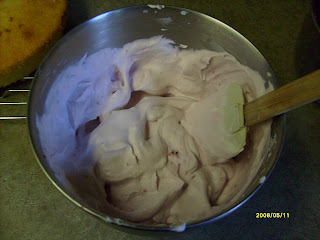For those not schooled in the joys of turning ho-hum local vegetables into delicious masterpieces, a stew for which the main ingredients are cabbage and squash might sound anything but adventurous. But a few exotic flavours can make a huge difference! I used the last of my delicious local organic vegetables to produce this West African delight based on a recipe from my very favourite cookbook: Simply in Season, by Mary Beth Lind and Cathleen Hockman-Wert. The tomatoes, cabbage, squash, garlic, and onions were all locally grown.
This is a rich, almost meaty vegetarian stew. I find that the cilantro and red pepper add some important flavours, and I’d recommend the crushed peanuts—they provide a delicious crunchy texture. I love this recipe so much that I double it so that I have some in the freezer for later.
The only downside is that you wouldn’t want to serve this stew to your calorie-counting friends, or those who have nut allergies.
Ingredients:
2 tbsp peanut oil
1 chopped onion
2-3 cloves of minced garlic
2-3 cups of chopped cabbage
3 cups of squash, cubed (you can also substitute sweet potato here)
fresh or dried hot red pepper, to taste
1 tsp of grated ginger root
1 cup of liquid (apple juice, tomato juice, broth or water)
1 apple, chopped (optional)
3 cups of tomatoes, chopped
1/2 cup of peanut butter
Toppings:
ground or crushed peanuts
fresh cilantro
fresh green onions
Fry onion and garlic in oil until soft. Add cabbage, squash, ginger, pepper and liquid. Simmer until squash is softened. Add apples, tomatoes, and peanut butter; heat through. Keep warm until ready to serve. Serve with toppings optional.
* A note on heat: I have read that West African dishes are notoriously spicy. So if you want to be authentic, spice it up! If you don't have a spicy tooth, don't worry. This dish is still delicious when only mildly spiced.





























